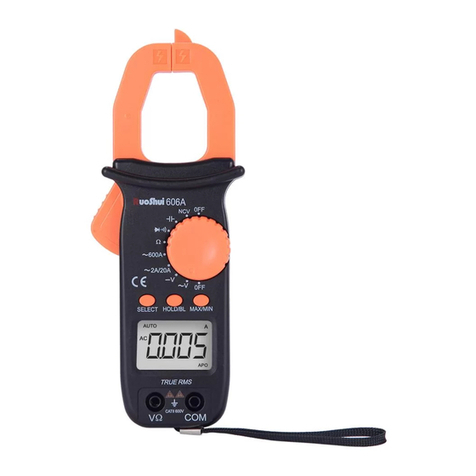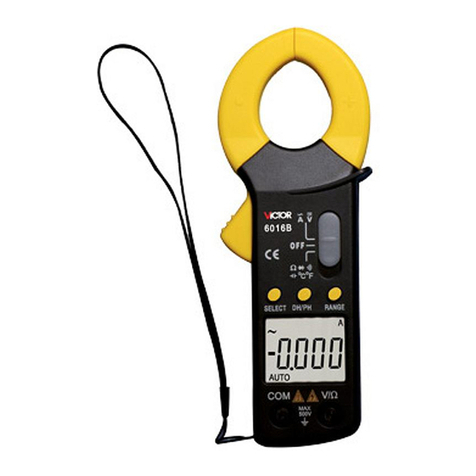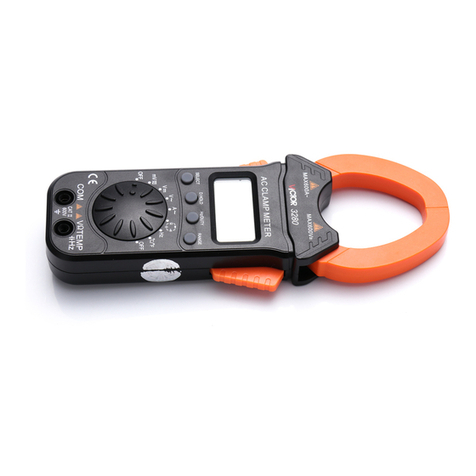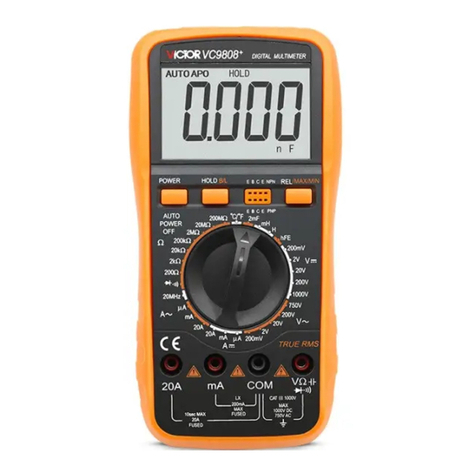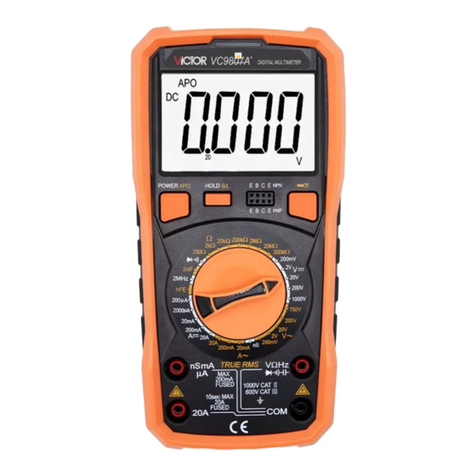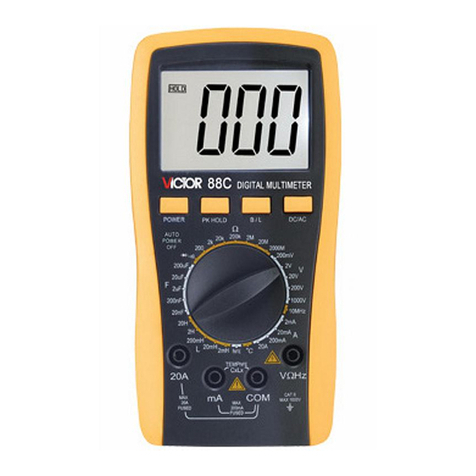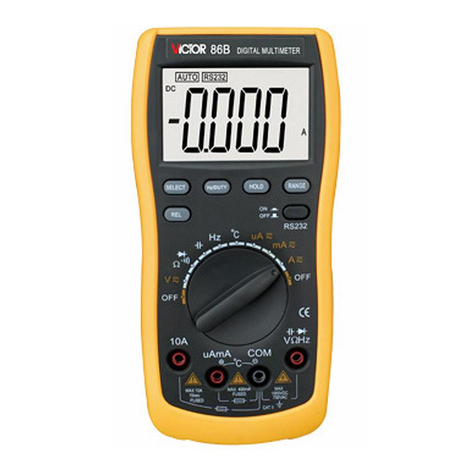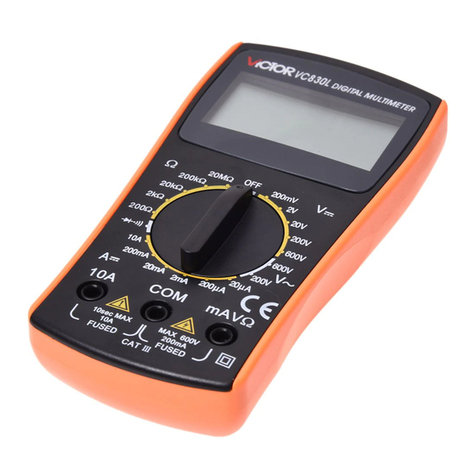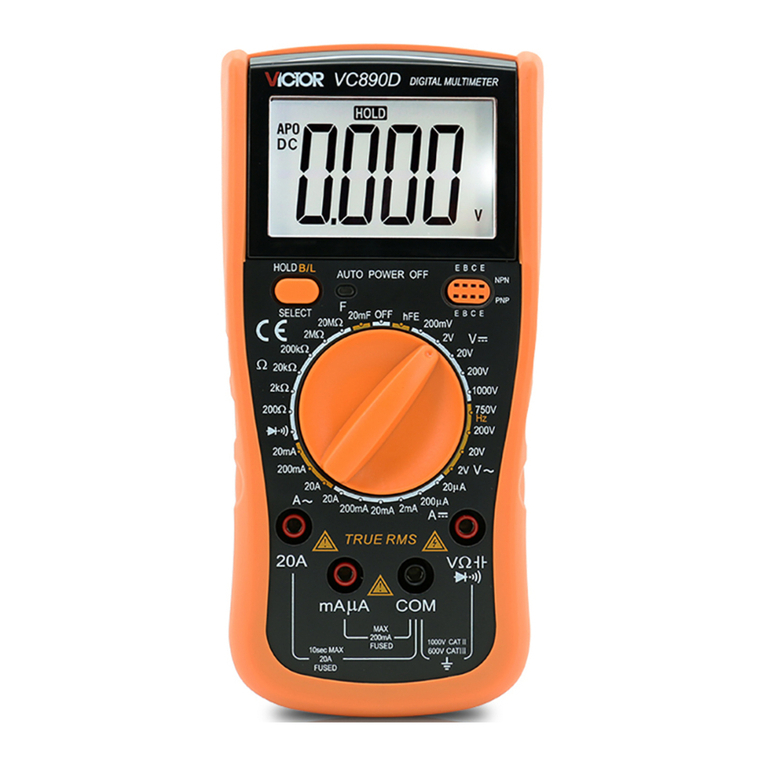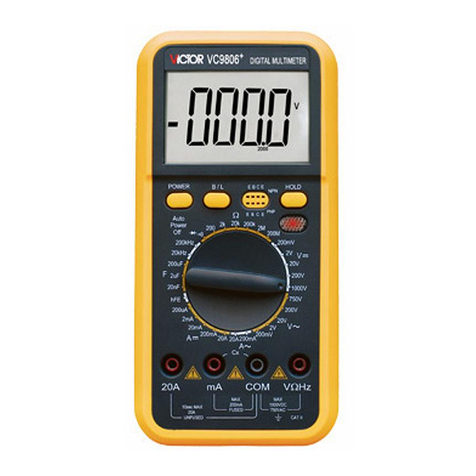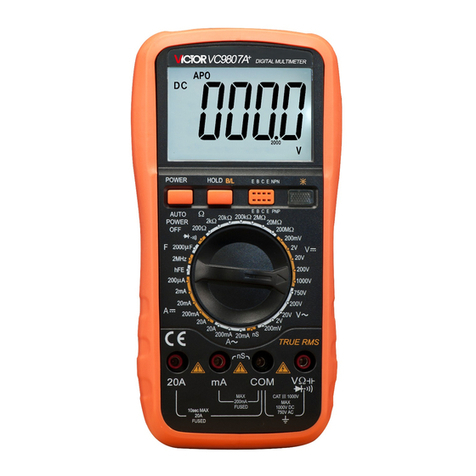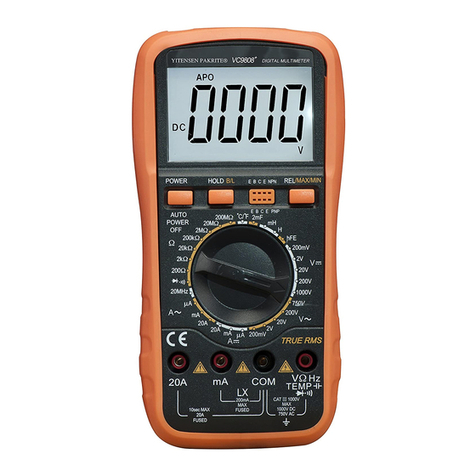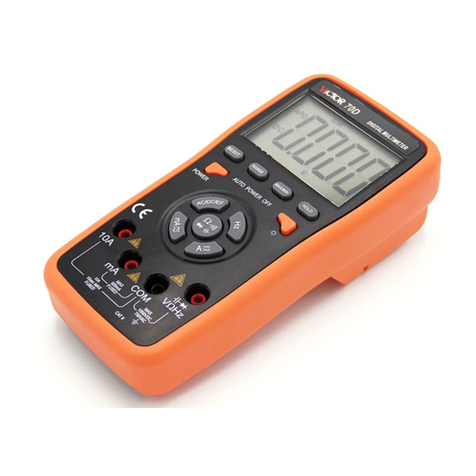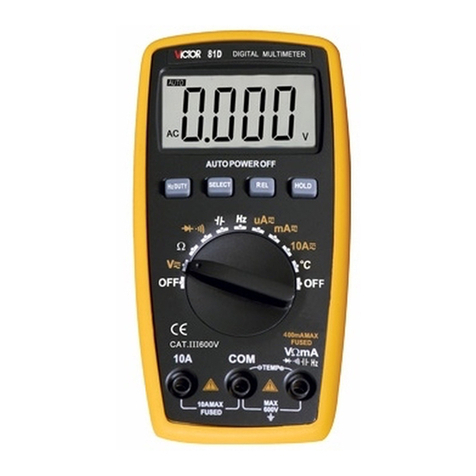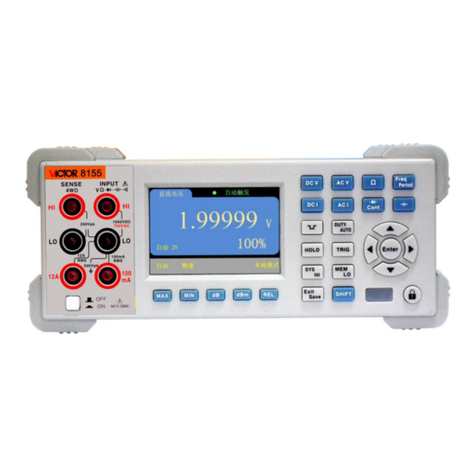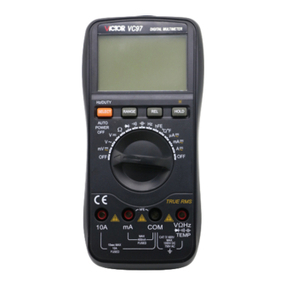1. pply the black test lead to “COM” terminal, and the red one to m
terminal (max. 200m ), or red test lead to “20 ” terminal(max. 20 ).
2. Set the knob to proper DC range, connect the meter to the circuit under
tested, the current value and polarity of red test lead connect to will display
on LCD.
NOTE:
1. If the current under tested is unknown beforehand, set the knob to the
highest range, then, select proper range according to the displaying value.
2. If LCD displays“1”, it means over range, should set the knob to a higher
range.
3. Max. input current is 200m or 20 (subject to where the rd test lead
apply to), too large current will blow the fuse. Be careful at 20 , because
20 is infused, continuously measuring will make the circuit heat and
effect on the accuracy even damaged the meter.
4-5.ACA MEASUREMENT
1. pply the black test lead to “COM” terminal and the red one to“m ”
terminal (max. 200m ) , or apply the red one to “20 ”
terminal(max. 20 ).
2. Set the knob to proper C range, connect the meter to the circuit under
tested.
NOTE:
1. I f the current under tested is unknown beforehand, set the knob to the
highest range, then, select proper range according to the displaying value.
2. If LCD displays“1”, it means over range, should set the knob to a higher
range.
3. Max. input current is 200m or 20 (subject to where the red test lead
apply to), too large current will blow the fuse. Be careful at 20 , because
20 is infused, continuously measuring will make the circuit heat and
effect on the accuracy even damaged the meter.
4-6.RESISTANCE MEASUREMENT
1. pply the black test lead to “COM” terminal and the red one to V/Ω/Hz
terminal.
2.Set the knob to proper resistance range; connect test leads crossly to the
resistor under tested.
NOTE:
1.If resistance is over selected range value, “1” displays, should set the knob
to a higher range. When measuring value is over 1MΩ, the reading will take
a few seconds to be stable, it’s normal for high resistance measuring.
2.When input terminal is in open circuit, overload displays.
3.When measuring in line resistor, be sure that power is turned off and all
capacitors are released completely.
4.Do not input any volt at this range.
NOTE: a:t 200Ω range, it should make the test leads short to measure the
wire resistance, then, subtracts from the real measurement.
b:t 200 MΩ range, make the test leads short, LCD displays 1.0MΩ, it’s
normal and has no effect on the accuracy and should be subtracted from real
measurement.
4-7.CAPACITANCE MEASUREMENT
1. Set the knob to proper capacitance range, and insert the test accessory to
“COM” and “m ” terminal. Be aware of that “COM” terminal corresponds
to anode and connects with red test lead, and “m ” terminal corresponds to
cathode and connects with black test lead.
2.Connect test leads to the two points of capacitor, be ware of polarity if
necessary.
NOTE:
1.If the capacitance under tested is over the max. value of selected range, LCD
displays “1” only, thus, should set the knob to a higher range.
2.It’s normal that there is a remained value on LCD before capacitance
measurement, and it has no effect on measuring.
3.When measuring at large capacitance range, if capacitor is broken or
leakage, LCD displays a value and it’s unstable.
4.Release the capacitor completely before measuring.
4-8.TRANSISTOR hFE
1.Set the knob to hFE range. Insert the test accessory to COM and m
terminal, and the anode is corresponding to COM and cathode is
corresponding to m terminal.
2. Verify the transistor under tested is NPN or PNP, insert emitter, base and
collector to proper jack.
4- .DIODE AND CONTINUITY TEST
1.pply the black test lead to “COM” terminal and the red one to V/Ω/Hz
terminal(the polarity of red lead is “+”).
2.Set the knob to range, connect test leads to the diode under tested,
the red test lead connects to diode positive polarity, the reading is the
approx. value of diode forward volt drop.
pply test leads to two points of tested circuit, if the inner buzzer sounds, the
resistance is less than (70±20)Ω.
4-10.DATA HOLD
Press down the key, the present value is held on LCD, press up the key and the
function is cancelled.
4-11.AUTO POWER OFF
fter stop working for 20±10 minutes, the meter will be into sleep mode. Press
“POWER” key twice to restart the power.
4-12.BACKLIGHT INDICATION
Press “B/L” key to turn on the backlight, will be auto off after 20 sec.
NOTE: When turning on backlight, the working current will be enlarged; it will
shorten the battery life, and enlarge error on some functions.
4-13. LIVE WIRE VERIFY
1. Remove black test lead from “COM” terminal, insert red lead to “V/Ω/Hz”
terminal.
2. Set the range knob to TEST range, apply red lead to the circuit under
tested.
3. If LCD displays “1”, and alarms with sound and light, it means that the
circuit under tested is live wire; if LCD doesn’t display “1” and doesn’t alarm, it
means the circuit under tested is “0” wire.
NOTE:
1. The function is only for testing C standard live wire ( C 110V~ C
